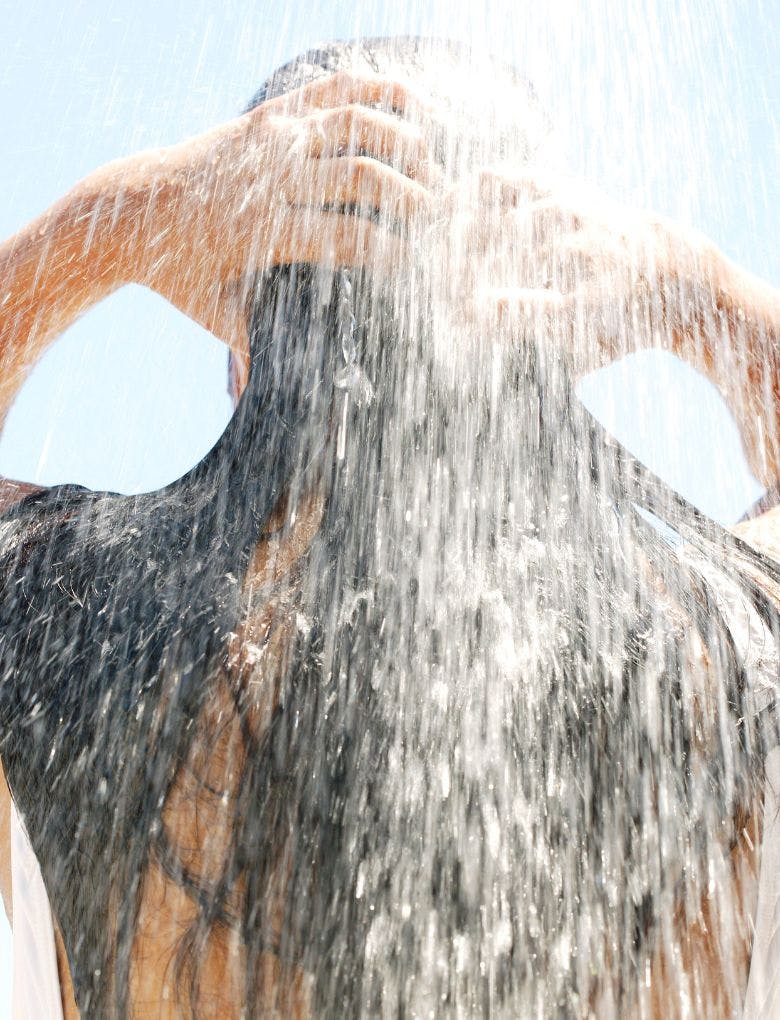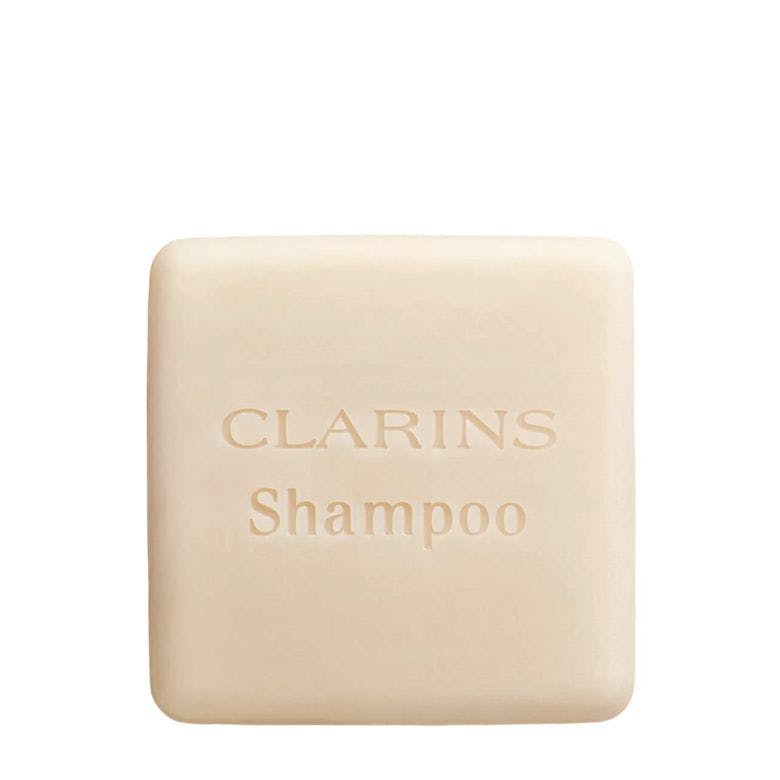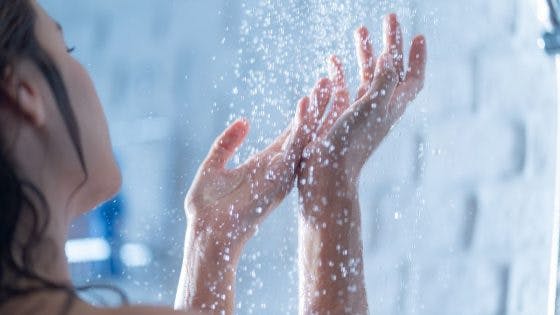The Waterless Beauty Movement: What’s Your Water Footprint?
5 minutes read
Saving water has become part of our green consciousness. Taking shorter showers, using wastewater in the garden and turning off the tap when brushing our teeth are as much part of the routine as putting out the recycling and switching off lights when leaving a room. But did you know that there are many hidden ways water drips into our everyday routines – including our beauty regime? And that these things all contribute to your water footprint. The average British person uses an astonishing 142 litres of water daily, while the average household of four uses an equally astounding 349 litres of water daily.

Why we should care about water use
Water scarcity is becoming more of a threat to populations on every continent. Fresh water makes up just 3% of all the water on earth, most of which is frozen in glaciers. According to UNICEF, 4 billion people experience water scarcity for at least one month a year, while more than 2 billion people live in countries without adequate water supply. The problem is set to get worse – UNICEF predicts that half of the world’s population will live in areas suffering from water scarcity by 2025, and 700 million people could be displaced by lack of access to water by 2030.
The beauty of water
It’s vital that we cut down our water usage where possible – and our beauty regime can be filled with H2O we might not think about. A bottle of shampoo, for example, can be made up of 70% water, while many creams and lotions contain 80% H2O. Look at the ingredients of your regular beauty products, and purified water, or aqua, as it is often referred to, will often be listed as the first ingredient. Water is the most frequently used ingredient in cosmetics, usually as a solvent for other ingredients. Water has the advantage of being cheap to use, safe for most skin types, makes creams easy to apply, and helps active ingredients sink into your skin.
On the other hand, water-based products can degrade quicker, so they require more preservatives and counter-intuitively, water can dehydrate your skin as it evaporates easily, taking your skin’s natural oils. H2O-filled products are also heavy and use more packaging, more energy to transport, and use up more space – all of which further contribute to their carbon footprint. As they aren’t diluted, waterless products also tend to be more concentrated, meaning consumers can use less, and they last longer.
Water-free doesn’t automatically mean more sustainable, however. Water might be used in large amounts in making a product or growing the ingredients, and oils used to replace the water in formulas might come from non-sustainable sources. Palm oil, for example, is often used as a neutral emulsifier in beauty products. Still, a lot of palm oil production is a major driver of deforestation, especially in Malaysia and Indonesia, threatening endangered species and leading to the release of greenhouse gasses. Therefore, investigating each brand and its credentials is essential to making eco-conscious choices.
Read: World Oceans Day 2023: The Sustainable Skincare Steps that will Help Protect Marine Life
Where should I look for water-free beauty products?
Thankfully, some forward-looking beauty brands are taking notice and seeing how they can limit or eliminate water from our favourite beauty products. As with many beauty trends, waterless – or anhydrous – products started taking off in South Korea, where butter, oils and waxes have all been used instead of water or formulas come in powdered form to be rehydrated at the point of use. There are also other easy ways to make your beauty routine more eco friendly from finding reef-friendly sunscreens to (brilliant) re-usable cotton pads.
What Clarins products can help me reduce water use?
Clarins Nourishing Shampoo Bar, £16, is eco-designed to give you the equivalent washes of 500ml of liquid shampoo in one 100g bar. The shampoo leaves hair soft, shiny, clean and healthy with its blend of natural ingredients that include nourishing organic argan and camellia oils. As well as water in products, how much H20 we use with products should be part of our water footprint consideration. Clarins Cleansing Oil can be used without water to remove stubborn make-up and leave skin refreshed, plump, moisturised and pollutant free – just massage in and remove with a reusable make-up pad. You can also use Clarins Velvet Cleansing Milk and Micellar Water without water to remove H2O from your cleansing routine, whichever is your preferred method of make-up removal.
Clarins Nourishing Shampoo Bar, £16

A few other brands are leading the way in making water-free products, including Ethique, known for their hair, body and skincare bars and new concentrates, which are all cruelty-free, vegan, palm oil-free, and plastic-free and come in compostable packaging.
Read: Is Ingredient Tracing the Future of Beauty?
Ethosa make shower gels that come in powder form and are hydrated in your home in a refillable and stylish aluminium bottle. The body washes are natural, vegan, smell amazing, and are suited to your skin type – they have a handy skincare quiz to find your perfect formula.
Sbtract has an irresistibly candy-coloured collection of water-free, palm-oil free and sustainably produced solid skincare bars, including cleansers, moisturising balms and serums.
Wild Sage + Co produce a divinely scented collection of nourishing soaps, shampoo bars and shaving soaps, plus powdered face masks, soothing balms and oil-based cleansers – all made from natural ingredients and packaged in plastic-free, recyclable, sustainable, bio-degradable and often refillable containers.
The Body Wash comes as a package of dissolvable foaming sheets that lathers up to create a full-body wash in a heavenly scent that is rich in aloe, shea butter and almond oil. Each sheet comes in a sachet that dissolves in water to be washed down the drain as you shower, making the product waste-free, with no single-use plastic, super light to transport and water-free in formulation, using 38% less water in manufacture.
Incorporating a few water-free products into one’s regime is now more accessible than ever – and doesn’t mean sacrificing performance – or indulgence – for going green.
Next read: Sustainable Skincare to Buy Now
Sign up for our newsletter
We will keep you in the loop for special offers, exclusive gifts and product news.

